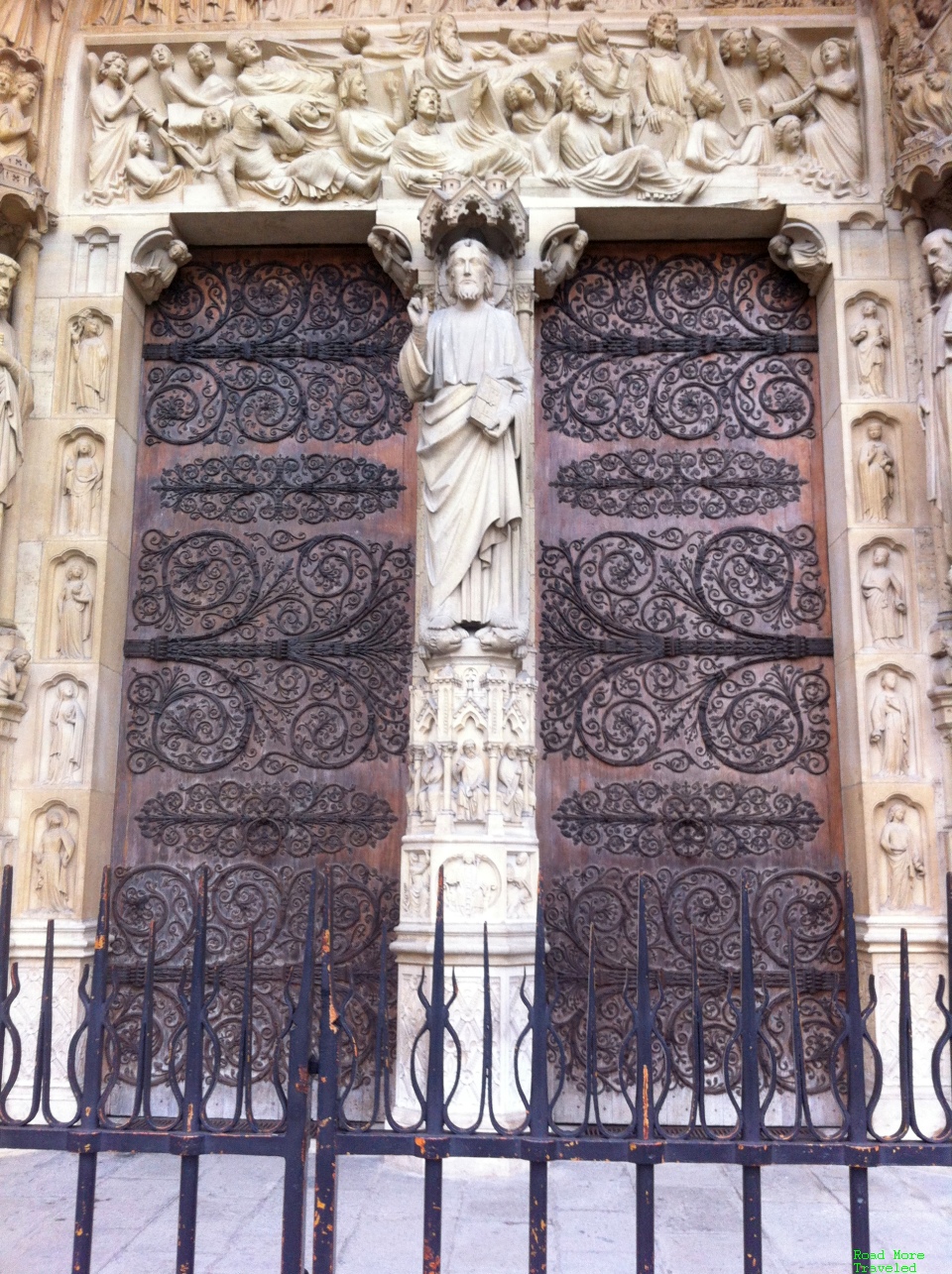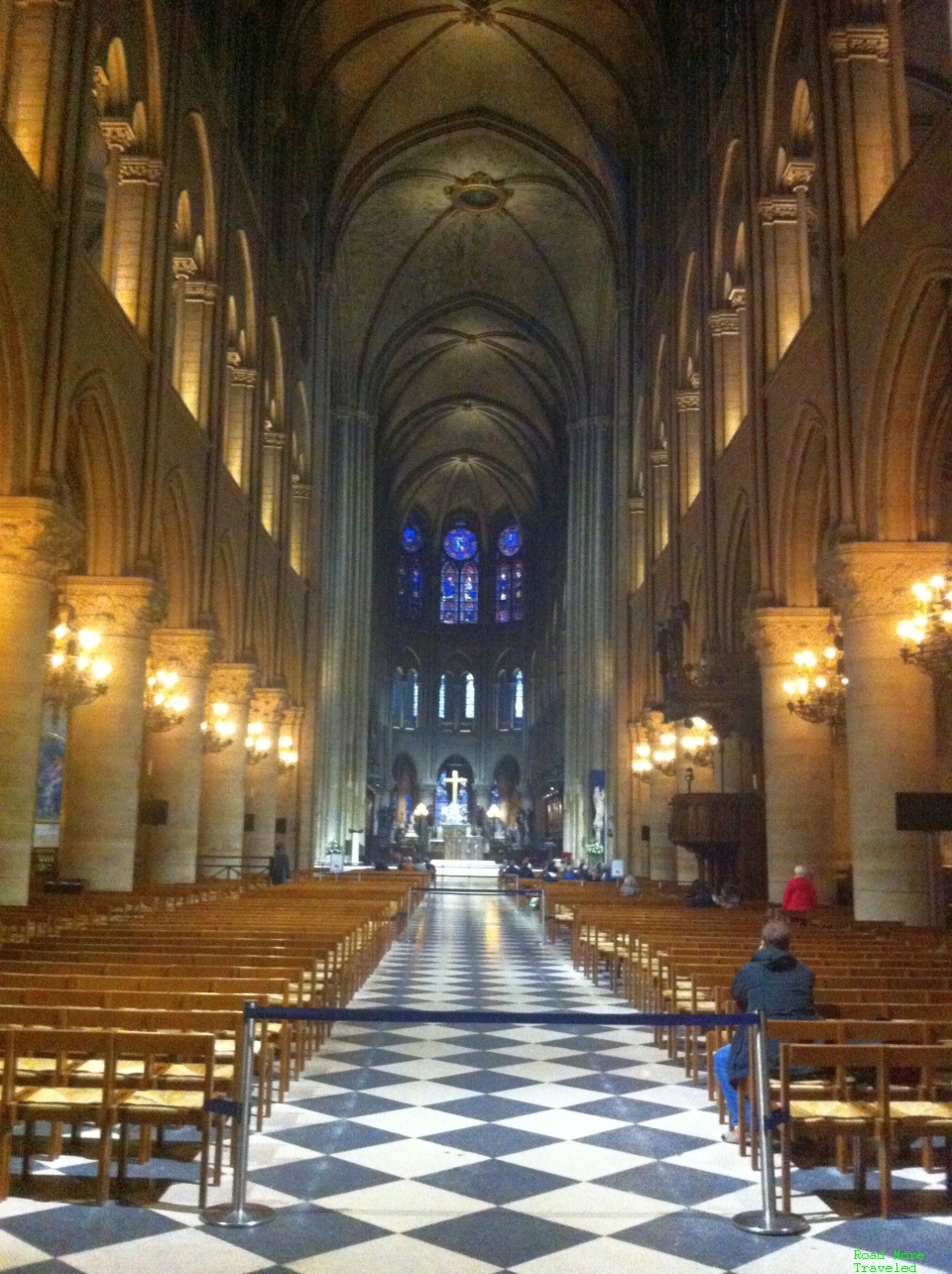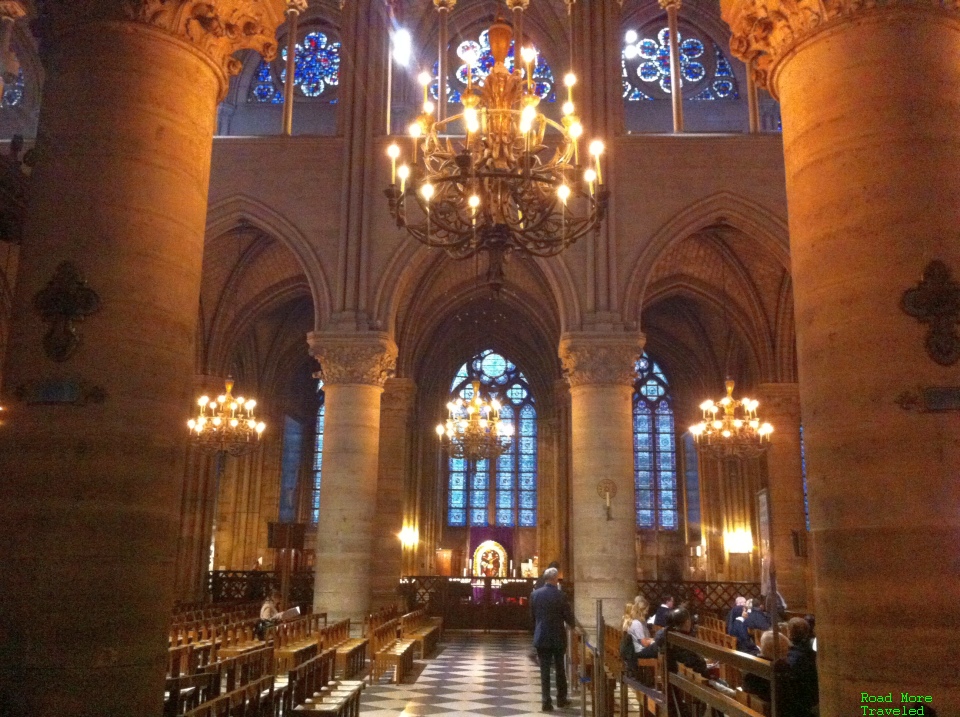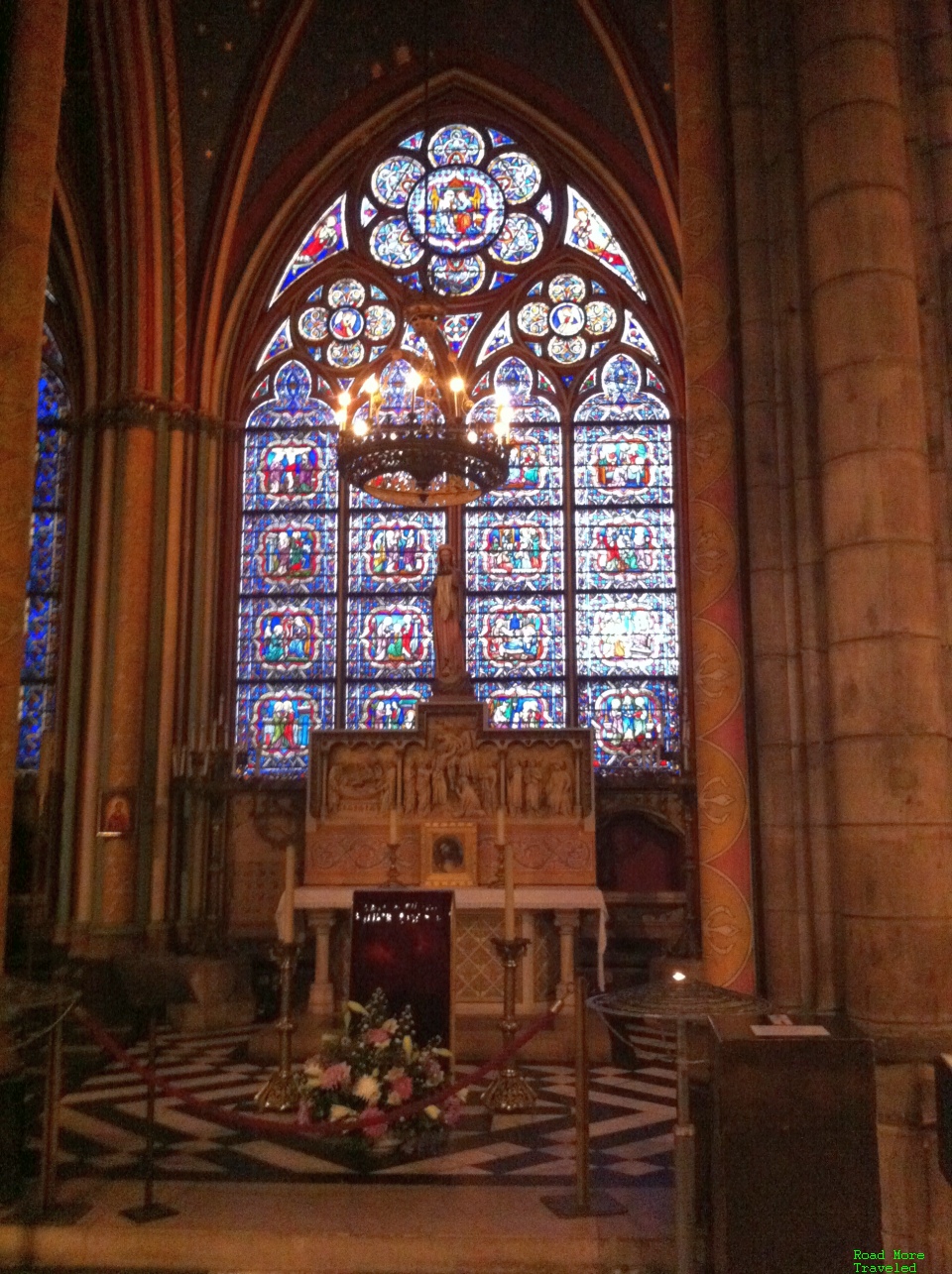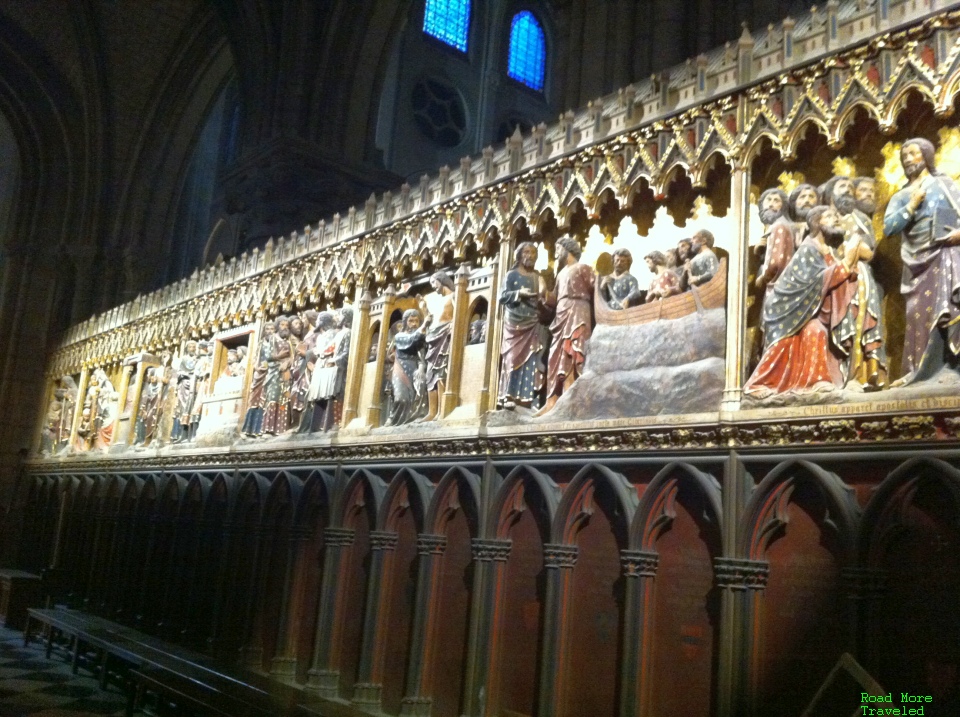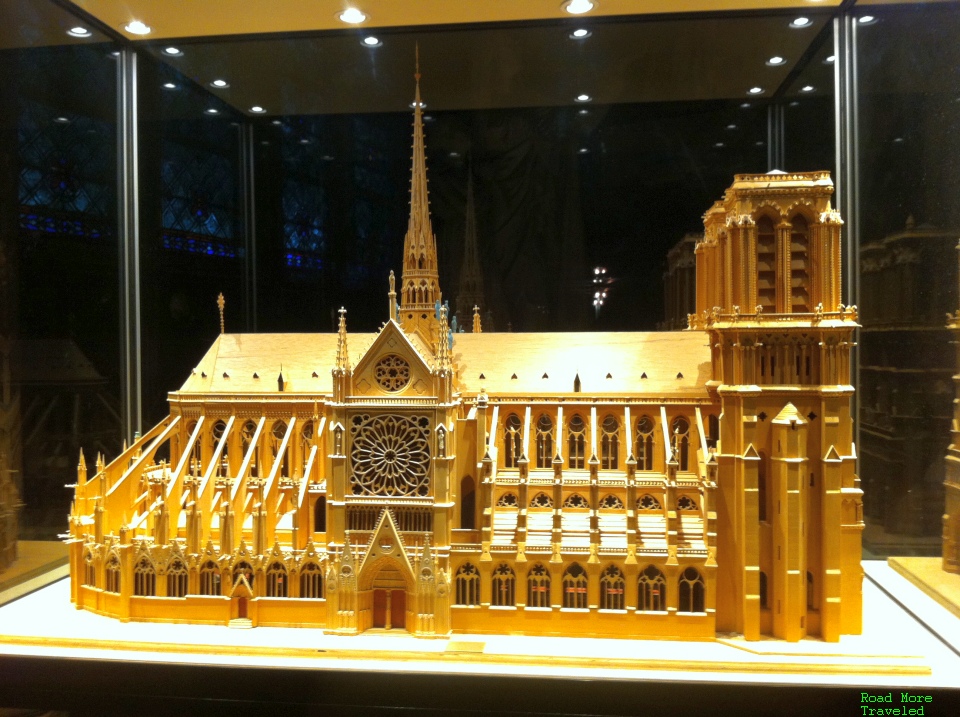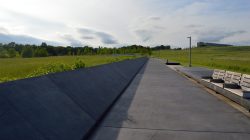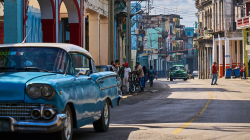Over lunch on Monday, I saw the horrific news of the fire at the iconic Cathédrale Notre-Dame de Paris. We’ve since seen images of the devastation of the cathedral’s storied roof and interior. Today, I recollect a visit my wife and I made to the Notre Dame more than three years ago.
An Accidental Visit on a Whim
I detailed our itinerary of an unexpected free Sunday morning in Paris in an old trip report. I booked separate tickets to Paris, and then onward to Prague. Not wanting to take a chance on delays or connection hassles, I booked a 6 1/2 hour layover. But our flight arrived early, and immigration/baggage were a breeze. So, we hopped on the Metro to spend a few hours in the city. We decided to get off at the Saint Michel/Notre-Dame station – not because of the cathedral, but because it seemed like a good central location to start a walking tour.
It honestly didn’t register until we reached street level where exactly we were. “Oh, THAT Notre-Dame!” And at 8 am on a Sunday, I saw that we practically had the place to ourselves. Just a few early bird tourists and parishoners arriving early for Mass. I’m not a morning person, at all; without our good travel luck getting to Paris, I doubt this 8 am visit would have happened. Good fortune and happenstance really did shine down on us that day. Anyway, we couldn’t help but stand in awe of the French Gothic masterpiece.
A Look at the Cathedral’s Interior
At this early hour, you can literally just walk in. As a few people prepared for the morning Mass, we enjoyed a quiet walk around the interior. There was just something calming about walking through here without hordes of people around. I found it truly sad to see photos of the altar littered with debris in the fire’s aftermath.
The cathedral is, of course, known for its intricate stained glass windows. Many feared the fire’s heat might melt the windows; early indications suggest most survived, though the extent of damage remains unknown.
The Notre-Dame also features many notable religious works of art. Workers reported saved the most important ones and moved these to the Louvre.
Also inside is a miniature replica of the Notre-Dame, complete with the renowned flying buttresses. Interestingly, some engineers believe the 13th-century buttresses ultimately saved the structure. Despite the raging fire, the buttresses did not fail.
Admiring the Iconic Spire
After finishing our walk around the interior, we took a walk around the back of the cathedral. Here, we enjoyed a view of the spire behind the Fontaine de la Vierge, a Gothic Revival fountain added in 1845. A touch of fall color made an especially beautiful scene. Ironically, while the spire’s collapse garnered the most attention during the fire, it’s actually a “new” addition to the cathedral. Interest in the old cathedral blossomed following the release Victor Hugo’s The Hunchback of Notre-Dame in 1831. A restoration project begun in 1844 added the spire.
Later, we walked down the Seine, taking in views of the Notre-Dame and its spire from a distance.
I have to admit. It’s going to be really, really strange not seeing that spire in the Paris sky for the forseeable future.
Final Thoughts
By the grace of God, firefighters saved the Notre-Dame’s structure, and many of its most important artifacts. I also have no doubt that the French people will find a way to rebuild it. But I fear it just won’t be the same. Who knew that this chance visit in 2015 would be the last time I’d see the cathedral in its original grandeur. It’s a good reminder that we should take nothing for granted.



